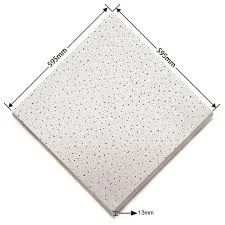Nov . 25, 2024 16:37 Back to list
How to Properly Install a Ceiling Access Panel in Your Home
A Comprehensive Guide to Installing Ceiling Access Panels
Access panels play a crucial role in ensuring that utility systems located above ceilings can be easily accessed for maintenance, inspection, or repairs. Installing a ceiling access panel can seem daunting at first, but with the right approach and tools, you can complete the task efficiently. In this article, we will discuss everything you need to know about installing a ceiling access panel, including preparation, installation steps, and considerations.
Why Install a Ceiling Access Panel?
There are several reasons why you might consider installing a ceiling access panel. First and foremost, access panels provide a convenient means of reaching plumbing, electrical, and HVAC systems hidden above the ceiling. They allow for quick inspections, repairs, and maintenance without the need to remove an entire section of the ceiling. Additionally, access panels can be useful in areas where frequent access is required, such as commercial kitchens, mechanical rooms, or basements.
Preparation Before Installation
Before you begin the installation process, it is essential to gather the necessary tools and materials. You'll need
- A ceiling access panel kit - A measuring tape - A utility knife or drywall saw - A level - A pencil - A stud finder (optional) - Safety goggles and a dust mask
Next, decide on the location where you want to install the access panel. It is crucial to choose a spot that can be easily reached and does not interfere with existing structures, such as lighting fixtures or beams. Using a stud finder can help you avoid placing the panel directly over studs or other obstacles.
Installation Steps
1. Measure and Mark Use the measuring tape to mark the dimensions of the access panel on the ceiling. Ensure that the size of the marking corresponds to the dimensions of the panel you purchased. Double-check your measurements for accuracy before proceeding.
install ceiling access panel

2. Cut the Opening Using a utility knife or drywall saw, carefully cut along the marked lines. If you're working with drywall, make sure to cut only the drywall and avoid any electrical wires or plumbing that might be behind it. Take your time during this step to ensure a clean cut.
3. Install the Frame Most access panel kits come with a frame that needs to be installed first. Fit the frame into the cut opening and ensure it is level. If necessary, you can use shims to make adjustments.
4. Secure the Frame Once the frame is positioned correctly and level, secure it to the ceiling. Use screws to fix the frame into place, ensuring that it is firmly attached.
5. Attach the Access Panel After securing the frame, attach the access panel itself. Most panels have hinges that allow them to swing open easily. Make sure the panel closes securely to provide a clean and finished look when not in use.
6. Finishing Touches If desired, you can paint or finish the access panel to match the surrounding ceiling, creating a seamless integration with your decor. This step can enhance the aesthetics of the space while maintaining functionality.
Considerations
When installing a ceiling access panel, it's important to consider the following factors
- Safety Always wear safety goggles and a dust mask to protect yourself from debris. - Code Compliance Check local building codes or regulations that may dictate specific requirements for access panels, especially in commercial properties. - Access Frequency Consider how often you will need to access the space behind the panel. This may influence the size and location of your installation.
Conclusion
Installing a ceiling access panel is a straightforward task that can significantly improve your ability to maintain the utility systems in your home or business. By following the steps outlined above and taking necessary precautions, you can create a functional and aesthetically pleasing access point that saves time and hassle in the long run. Whether you are a DIY enthusiast or a professional contractor, this guide provides a solid foundation for your ceiling access panel project.
-
Quality Ceiling Trap Doors & Access Panels | Easy & Secure AccessNewsAug.30,2025
-
Durable Ceiling T Grid Systems | Easy InstallationNewsAug.29,2025
-
PVC Gypsum Ceiling: Durable, Laminated Tiles for Modern SpacesNewsAug.28,2025
-
Pvc Gypsum Ceiling Is DurableNewsAug.21,2025
-
Mineral Fiber Board Is DurableNewsAug.21,2025
-
Ceiling Tile Clip Reusable DesignNewsAug.21,2025







